Egyptian hieroglyphs
Videos
Page
Egyptian hieroglyphs were the formal writing system used in Ancient Egypt for writing the Egyptian language. Hieroglyphs combined logographic, syllabic and alphabetic elements, with more than 100 distinct characters. Cursive hieroglyphs were used for religious literature on papyrus and wood. The later hieratic and demotic Egyptian scripts were derived from hieroglyphic writing, as was the Proto-Sinaitic script that later evolved into the Phoenician alphabet. Through the Phoenician alphabet's major child systems, the Egyptian hieroglyphic script is ancestral to the majority of scripts in modern use, most prominently the Latin and Cyrillic scripts and the Arabic script, and possibly the Brahmic family of scripts.

Hieroglyphs from the tomb of Seti I (KV17), 13th century BC
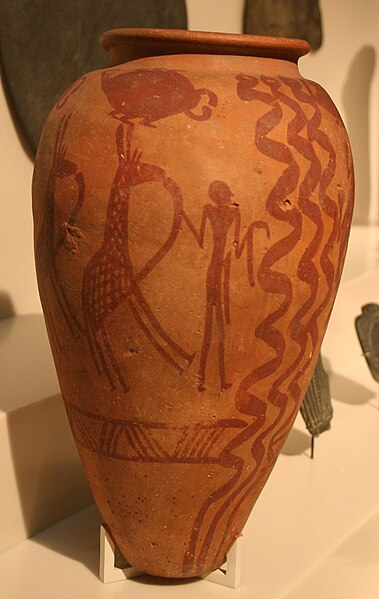
Paintings with symbols on Naqada II pottery (3500–3200 BCE)
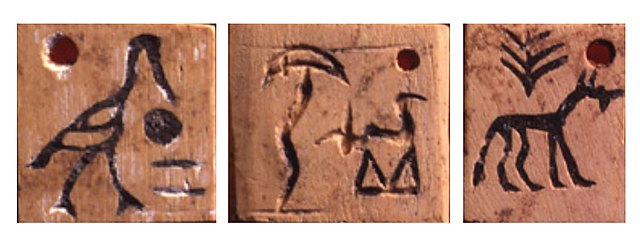
Designs on tokens from Abydos, carbon dated to c. 3400–3200 BC. They are similar to contemporary tags from Uruk.

Labels with early inscriptions from the tomb of Menes (3200–3000 BCE)
Writing system
Videos
Page
A writing system comprises a particular set of symbols, called a script, as well as the rules by which the script represents a particular language. Writing systems can generally be classified according to how symbols function according to these rules, with the most common types being alphabets, syllabaries, and logographies. Alphabets use symbols called letters that correspond to spoken phonemes. Abjads generally only have letters for consonants, while pure alphabets have letters for both consonants and vowels. Abugidas use characters that correspond to consonant–vowel pairs. Syllabaries use symbols called syllabograms to represent syllables or moras. Logographies use characters that represent semantic units, such as words or morphemes.

Written Chinese uses morphosyllabic characters assembled from phonetic and semantic components in order to encode the spoken language
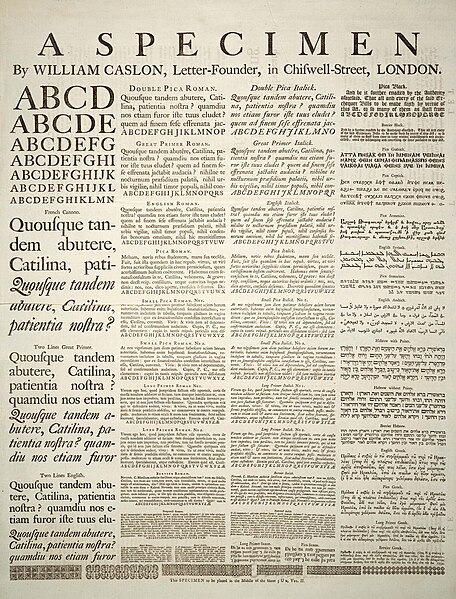
A Specimen of typefaces and styles, by William Caslon, letter founder; from the 1728 Cyclopaedia
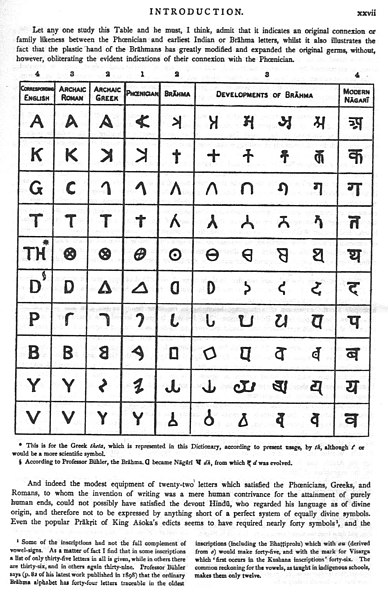
Table of scripts in the introduction to Sanskrit-English Dictionary by Monier Monier-Williams.
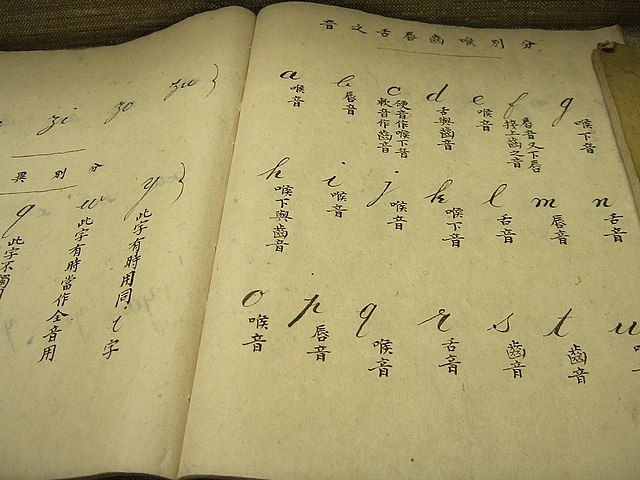
This textbook for Puyi shows the English alphabet. Although the English letters run from left to right, the Chinese explanations run from top to bottom then right to left, as traditionally written.